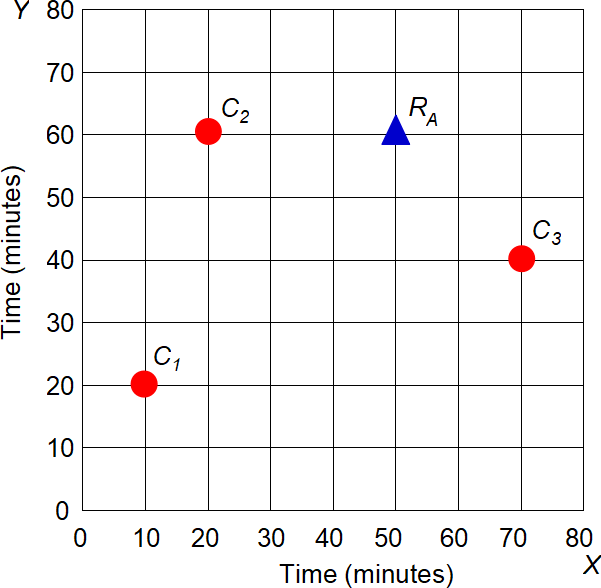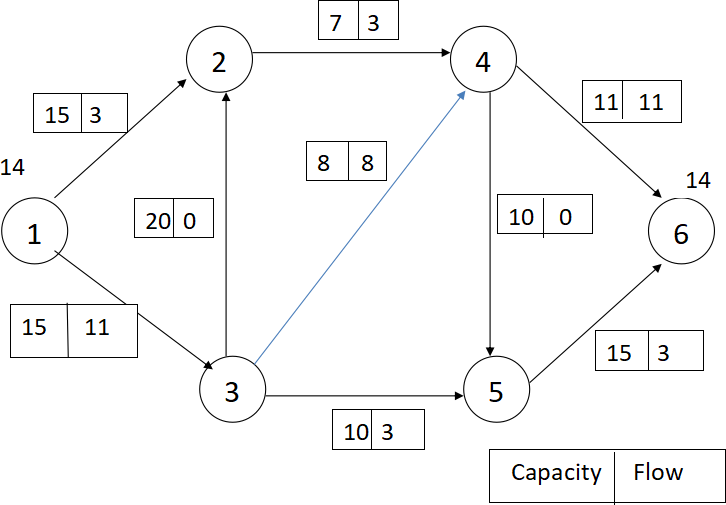关键词 > SCMG/OPMT475
SCMG/OPMT475 Exam-II Spring, 2024
发布时间:2024-05-13
Hello, dear friend, you can consult us at any time if you have any questions, add WeChat: daixieit
SCMG/OPMT475 Exam-II
Due: April 29th, 2024
(Spring, 2024)
PROBLEM 1 (15 Points):
The Makonsel Company is a fully integrated company that both produces goods and sells them at its three retail outlets. After production, the goods are stored in the company’s two warehouses until needed by the retail outlets. Trucks are used to transport the goods from the two plants to the warehouses, and then from the warehouses to the three retail outlets (RO)
Using units of full truck loads, the following table shows each plant’s monthly output, its shipping cost per truck load to each warehouse, and the maximum amount that each plant can ship per month to each warehouse (for example, Plant 1 cannot ship more than 225 full truck loads to Warehouse 1).
|
To |
Unit Shipping Cost |
Shipping Capacity |
Plant Capacity |
||
|
From |
Warehouse 1 |
Warehouse 2 |
Warehouse 1 |
Warehouse 2 |
|
|
Plant 1 |
$425 |
$560 |
225 |
250 |
500 |
|
Plant 2 |
$510 |
$600 |
275 |
300 |
400 |
For each retail outlet (RO), the table below shows its monthly demand, and its shipping cost per truck load from the warehouse.
|
|
Unit Shipping Cost |
||
|
|
RO1 |
RO2 |
RO3 |
|
Warehouse 1 |
$470 |
$505 |
$490 |
|
Warehouse 2 |
$390 |
$410 |
$440 |
|
Demand |
300 |
300 |
250 |
(a) Develop a network representation of this problem with all the relevant data.
(b) Develop a mathematical model to determine the optimum distribution plan with the restriction that each Retail Outlet is single sourced from only one of the Warehouse.
(c) Use SOLVER to obtain the optimal assignment of Retail Outlet to the warehouses as well as the distribution plan.
PROBLEM 2 (15 Points):
A hospital group wishes to locate an outpatient clinic or clinics in a rural area of Africa. The construction costs and other considerations suggest that one or two centers would be about right. Since traveling is difficult for patients in this part of the world, proximity to such facilities often dictates their choice. Therefore, location is best determined based on weighted distance (number of patients times distance from the facility).Table below shows the annual number of patients likely to visit the clinic(s) and their cluster locations (X-Y coordinates—use K = 1 kilometer).
|
Cluster |
Number of Patients/Yr |
X-coordinate |
Y-Coordinate |
|
A |
9000 |
50 |
0 |
|
B |
1600 |
10 |
10 |
|
C |
3000 |
30 |
15 |
|
D |
700 |
40 |
20 |
|
E |
2000 |
10 |
24 |
|
F |
400 |
40 |
30 |
|
G |
500 |
0 |
35 |
|
H |
8000 |
5 |
45 |
|
I |
1500 |
40 |
45 |
|
J |
4000 |
20 |
50 |
It is estimated that it costs an average of $1 per kilometer (consider round-trip for cost analysis) for a patient to travel or to be transported to and from the clinic(s).
What is the best location for a single clinic? Show detail of your work.
If two clinics are to be located, iteratively use Multiple COG method (determine the initial location, allocate patient cluster to each of these locations, and revise the locations of the two clinics and repeat until no change occurs).
A clinic costs $500000 per year to equip and staff. On purely economic grounds, should the second clinic be built?
PROBLEM 3 (15 Points):
A company is thinking about opening a retail shopping centers (RB) of about 600,000 square feet to attract customers from three areas (C1, C2, and C3). Currently there is a competing shopping center (RA) of about 1,000,000 square feet. The customer clusters have a buying potential of $10, $5, and $7 million respectively. Figure below represent the locations (in terms of travel time). Use Huff’s method (use parameter a to be 2) to evaluate the sales potential for two potential locations for RB – namely (i) at (20, 20) or (ii) (20, 50). Which one will you recommend?

PROBLEM 4 (15 Points):
Consider the following distribution network that supports flow of products from Node-1 to Node-6. Numbers next to each arc represents its capacity and the flow respectively. In order to determine the capacity of this network, so far you have figured out a way to ship 14 units from Node-1 to Node-6 as shown in figure below.

(a) For the flows given in Figure on previous page, is Node 1 à Node 2 à Node 4 ß Node 3 à Node 5 à Node 6 a Flow Augmenting path? If yes, how much additional flow you can send along this path. Discuss.
(b) Starting with flows given in Figure on previous page (with total flow of 14 so far), use Flow Augmenting path method to find the capacity of this network. At each iteration, determine the FAP that allows maximum additional flow. At each iteration, do not simply find the path by inspection but show the process step-by-step (Labeling Method you use in general to find such a FAP). You can use copies of the figures at the back of the exam to show details of your work. At the end, identify the bottleneck arcs.

